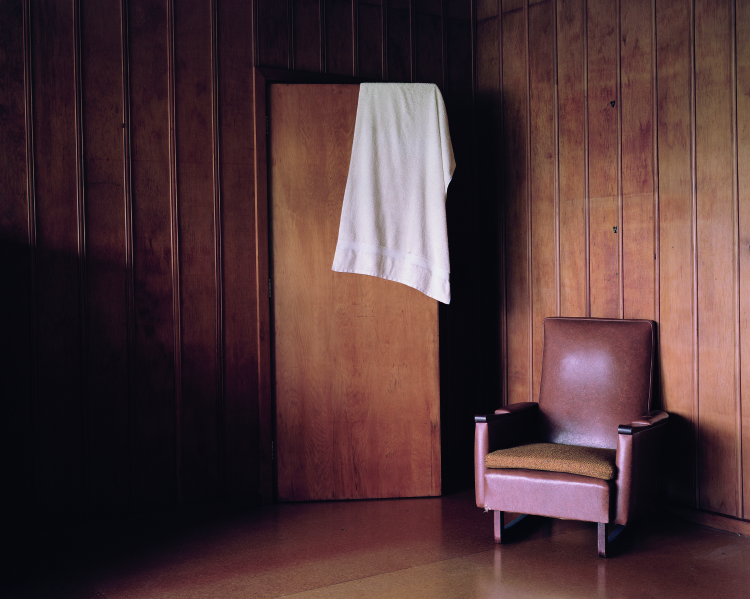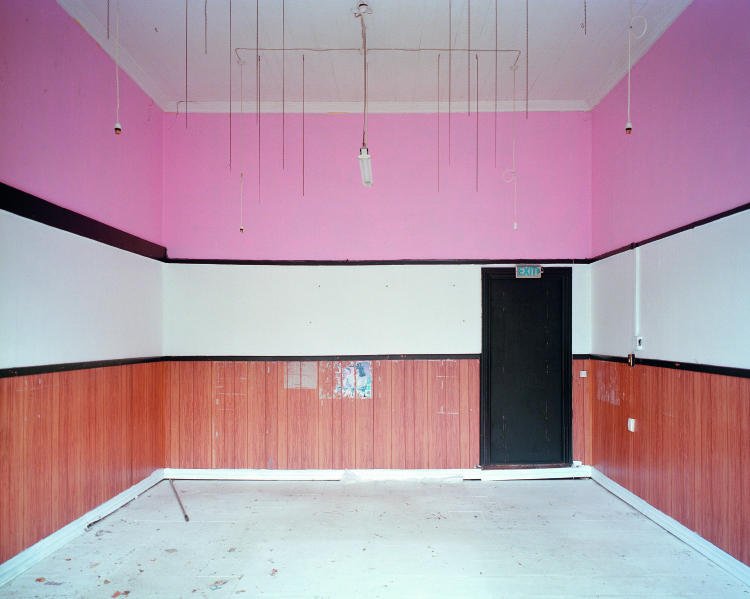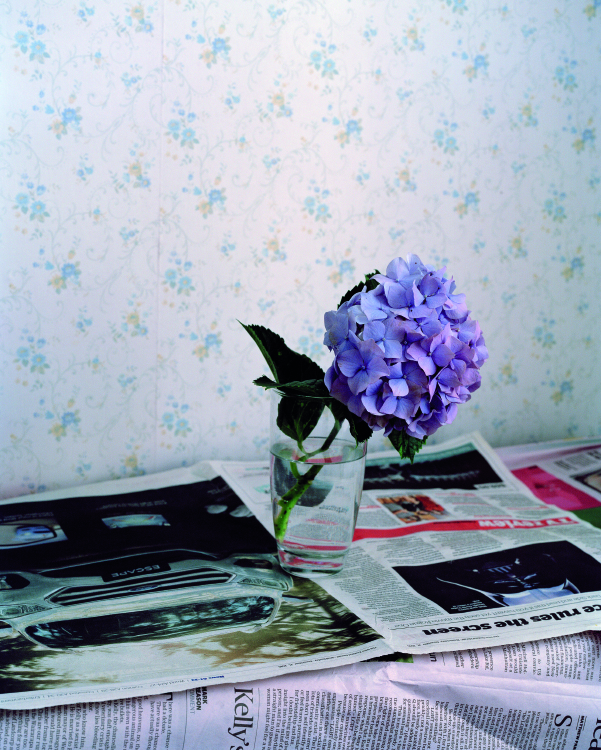Anticipated Events
Time, Being, & Harry Culy
DAVID HERKT

HARRY CULY Interior with towel, Marlborough Sounds 2015 Archival pigment print from negative, 120 mm. & 4x5” film
Harry Culy’s interior photographs seem to have a preternatural temporal stillness. Empty rooms, a light-bulb suspended on a flex from a ceiling plane, vacant chairs, and an apparently casual arrangement of flowers, all become stark revelations captured in a stopped frame.
But look everywhere and narratives are coiled and awaiting release from compression and silence. Culy’s photographs possess an implacable air of paused being, yet their effect is based on the presence of a hair-trigger tension. Time and stories loom on the other side of the shutter. Objects are placed significantly. A recent towel is draped over a door. Unknown import seeks unravelling.
Culy, himself, is an apparent contradiction. Despite his interest in motionless moments, he is also a well-known participant in Wellington’s skateboard community. His boarding activities feature in images by Jake Mein, and video documentaries by Dan Kircher and Jason Gallant. In this light, the relationship between time and movement in Culy’s work becomes an anticipatory window.
Influenced by the Aotearoa Gothic movement, as seen, most classically in Janet Frame’s writing or Vincent Ward’s movie Vigil, Culy has sometimes quoted expatriate New Zealand writer and essayist Martin Edmond: ‘Where is Gothic? It’s in your neighbourhood, just around the corner.’(1)
‘There was also this kind of undercurrent of darkness I was interested in exploring,’ Culy explained in materials associated with his 2014 By the Wayside exhibition. ‘Basically, I wanted take a different angle to the colourful picture postcards we are used to associating New Zealand with, and find out what this country meant to me.’(2)
Culy’s vision is condensed in the photographs he takes with his Ebony 4x5” field camera, ‘a big . . . inefficient camera’ which ‘forces’ him to slow down and look at the world. ‘Through the ground glass, under the dark cloth,’ he explains, ‘the everyday world becomes this beautiful little upside down painting. That experience is a strange but kind of amazing way of looking.’(3)
Distanced, the artist aestheticises both foreboding and inertia. His flowers await the first petal drop. Closed doors could unexpectedly open. Revelation broods. The unpeopled interiors are, according to Culy, actually about those who inhabit or have inhabited these spaces, and what they have left behind. ‘The images all have aspects of documentary, yet they are also staged and manipulated,’ he says. ‘I hope they create images of the psychological as well as physical interiors of the absent people. Maybe, the absence is the subject too?’(4)
It is a world of stirring possibility but it is also a world of Gothic revenants, disturbingly restored to life, upending the natural scheme of things. Culy’s objects in their implacable being, in their truncated narratives, are small enigmatic revolutions, caught in a temporary moment.
1. Quoted in http://www.undercoat.net/harry-culy-by-the-wayside/, retrieved 21 April 2017. 2. http://www.dphoto.co.nz/reviews/photography-news-6900/the- roads-home-harry-culy, retrieved 21 April 2017. 3. Harry Culy, email to author, 11 April 2017. 4. Ibid.

HARRY CULY Bedroom lightbulb, Wellington 2014 Archival pigment print from negative, 120 mm. & 4x5” film

HARRY CULY Condemned store with pink wall, Wellington 2014 Archival pigment print from negative, 120 mm. & 4x5” film

HARRY CULY Still life with Hydrangea, Ohope 2016 Archival pigment print from negative, 120 mm. & 4x5” film

HARRY CULY Interior with blue chair, Wellington 2015 Archival pigment print from negative, 120 mm. & 4x5” film
